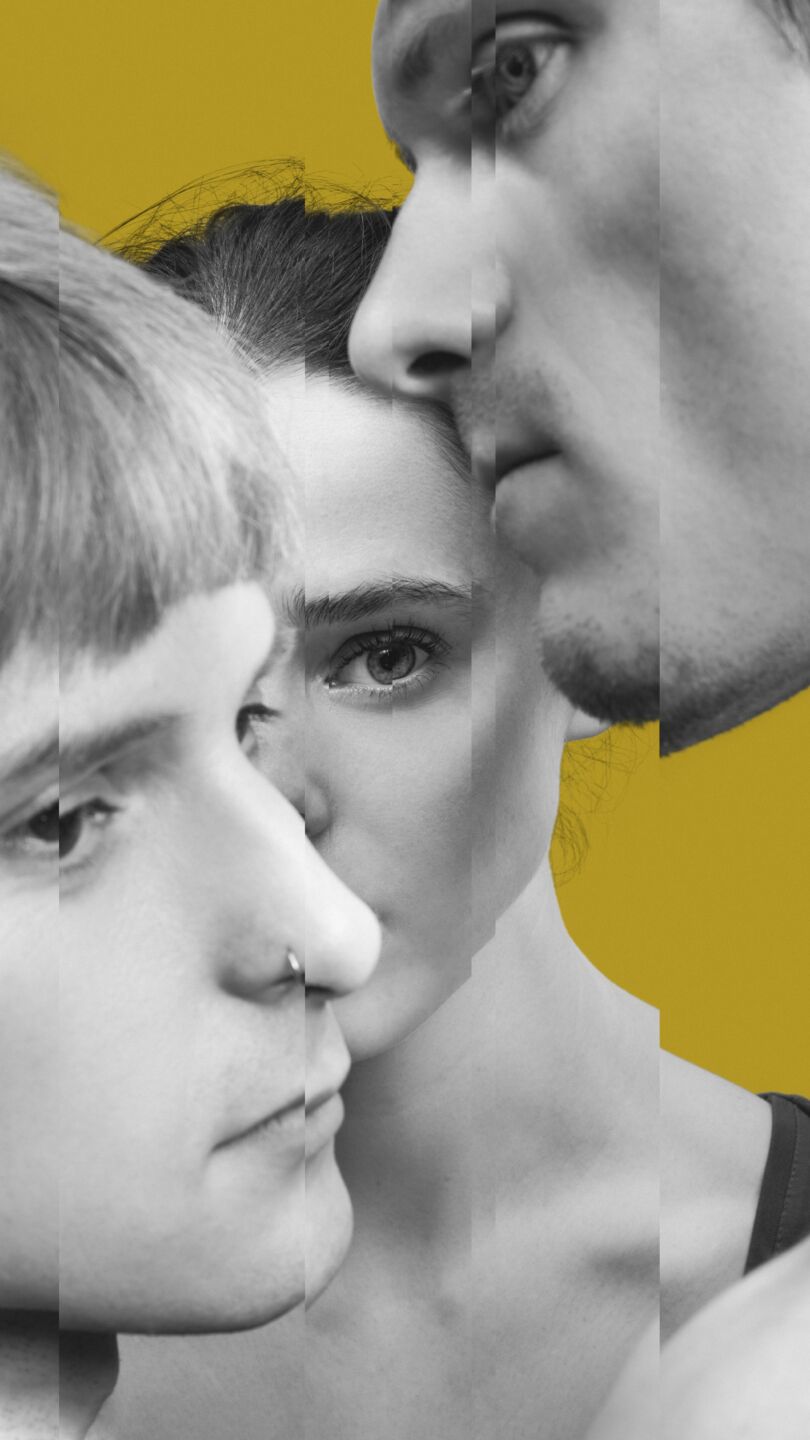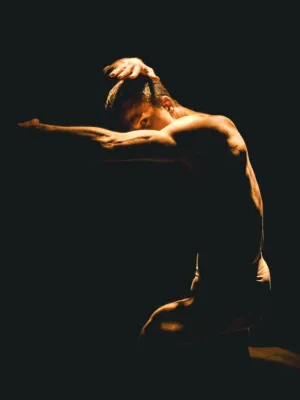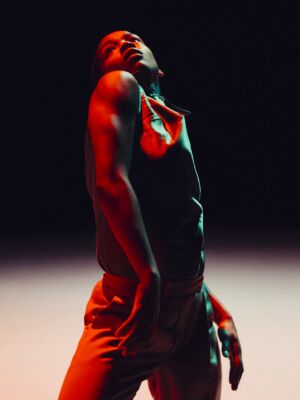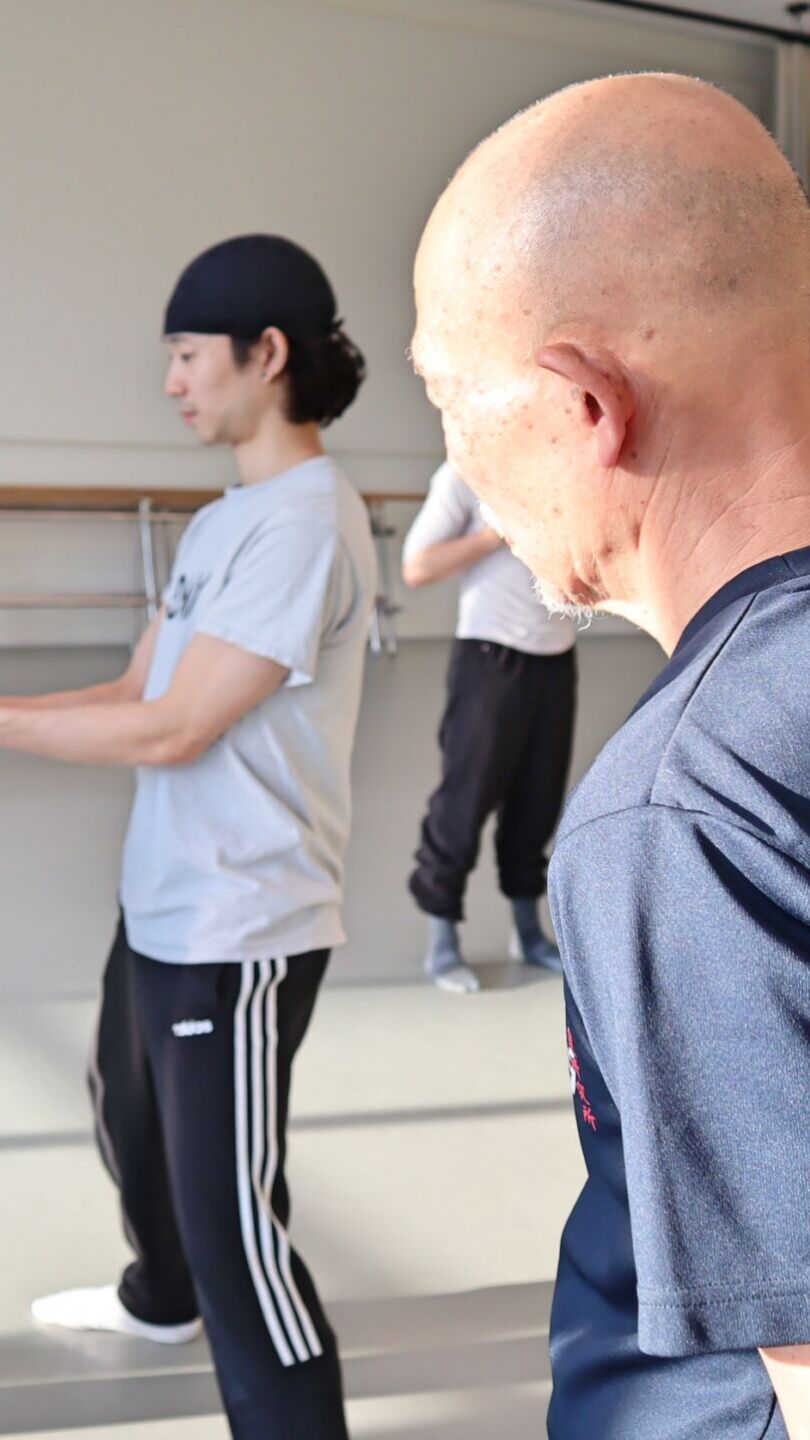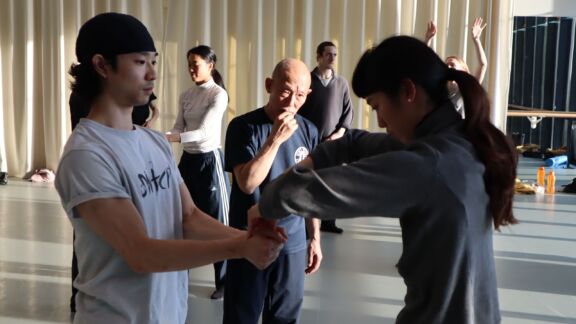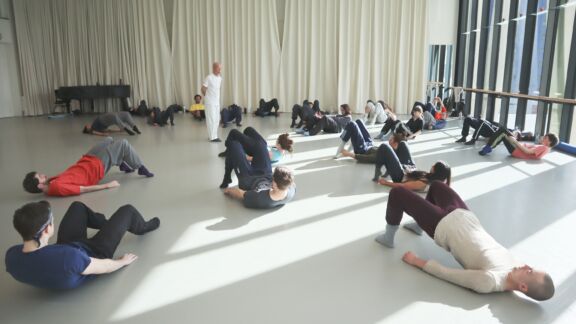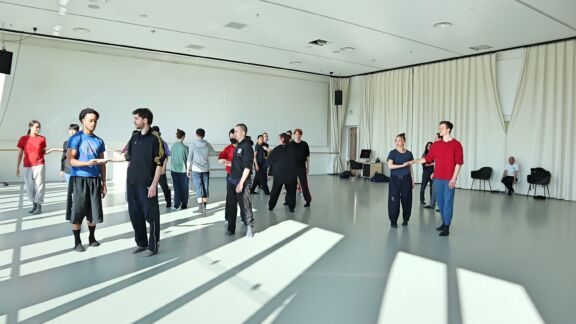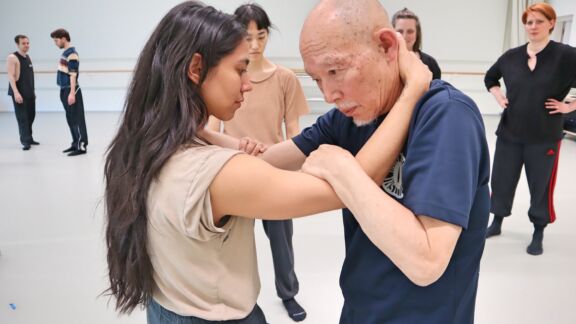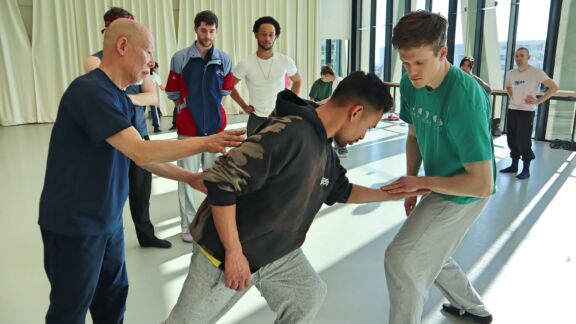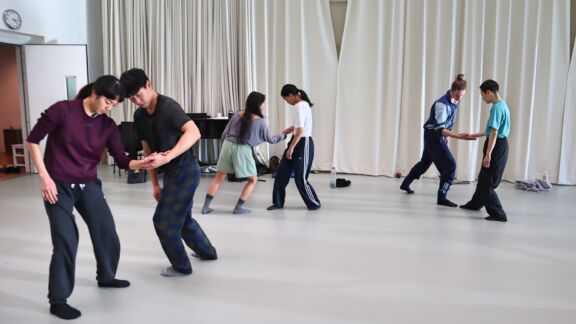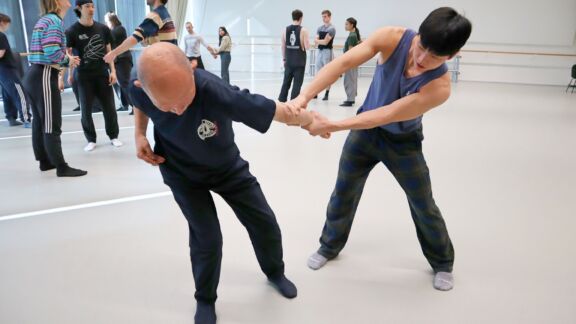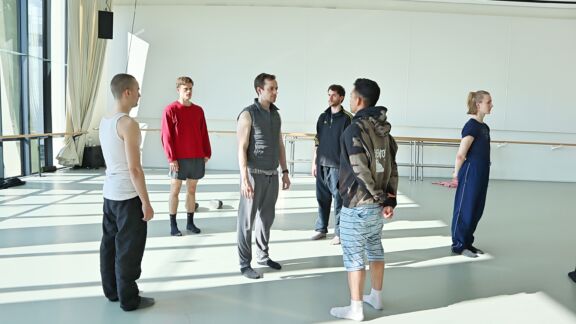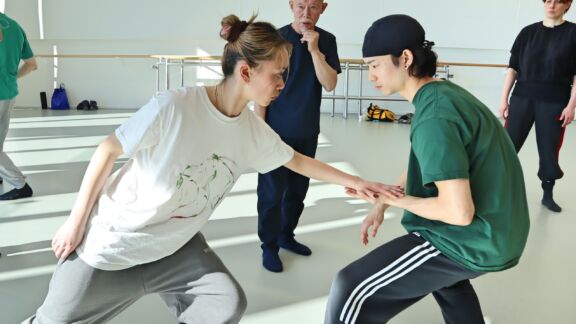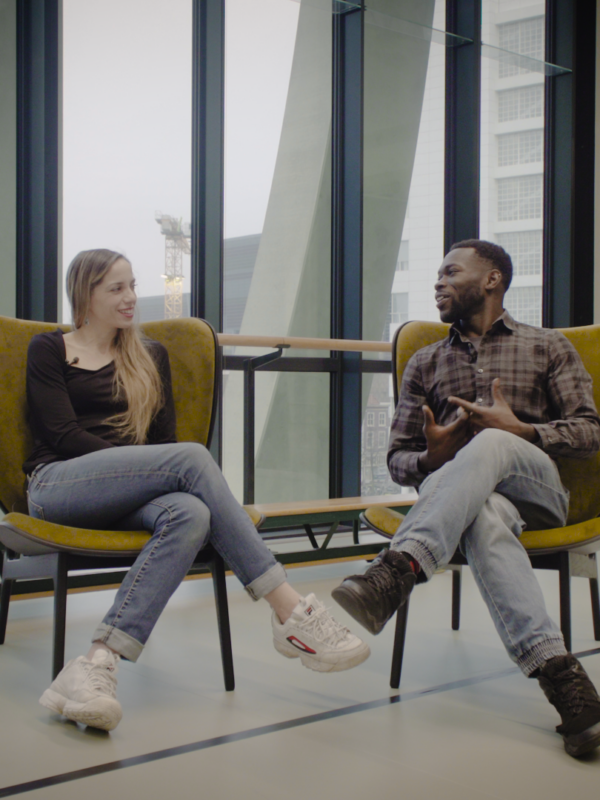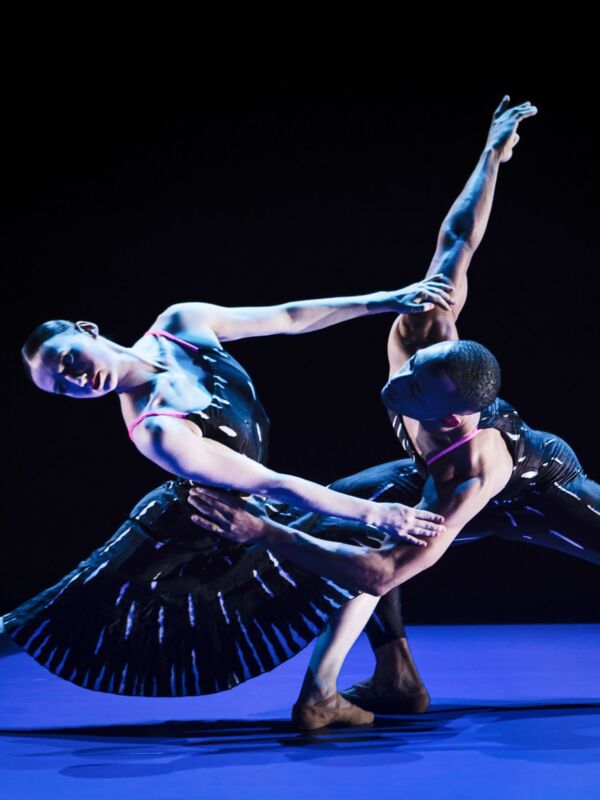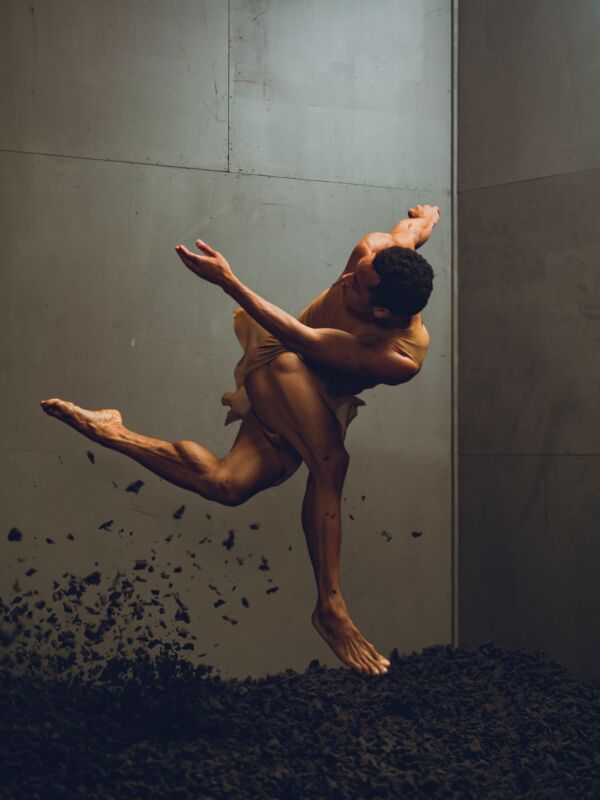In the beginning of March 2022, NDT 1 was given a six-day-long workshop by sensei Akira Hino in budo martial arts (‘budo’ means Japanese). Working with Hino was in line with our goals within the ‘shared platform’ program in the NDTLab – where space is created for research and experiment. It was a unique experience for both parties. “The room got quiet and the air in the room got denser as the dancers worked on their own bodies in such a precise, sensitive manner.”
PHOTOS BY YUKO TAKEDA
